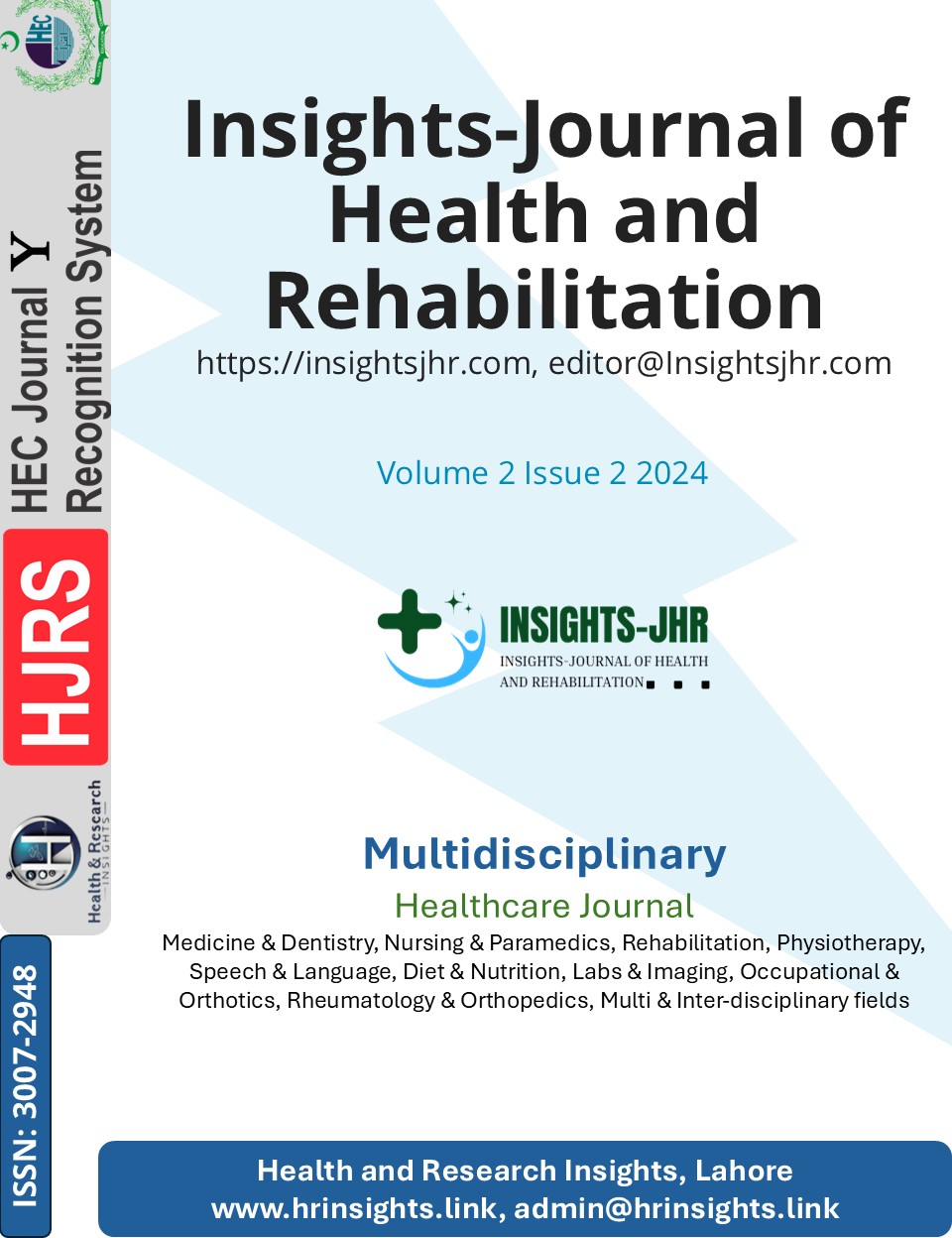OUTCOMES OF STROKE SURVIVORS USING STROKE IMPACT SCALE FOR THE PATIENTS AT RAFSAN NEURO-REHAB CENTER
DOI:
https://doi.org/10.71000/jvg7yh11Keywords:
Cerebrovascular Accident, Disability, Physical Function, Psychological Domains, Quality of Life, Rehabilitation, StrokeAbstract
Background: Stroke is a leading global cause of morbidity and mortality, significantly affecting survivors' quality of life (QOL) due to physical and psychological disabilities. These disabilities often result in long-term functional impairments, limiting independence and daily activities. Aging and gender are critical factors influencing stroke recovery, with physical domains particularly impacted in the elderly. Addressing modifiable risk factors is essential to minimize the adverse effects of stroke and improve the quality of life for survivors.
Objective: To assess the outcomes of stroke survivors using the Stroke Impact Scale (SIS) at Rafsan Neuro-Rehab Center.
Methods: A cross-sectional survey was conducted at Rafsan Neuro-Rehab Center from April to September 2024. A total of 118 stroke survivors aged 40–65 years, who experienced a stroke within the last 2–12 months, were included through convenience sampling. Patients with cognitive deficits or other neurological conditions were excluded. The Stroke Impact Scale was used to assess eight QOL domains, and SPSS 22 was employed for data analysis. Statistical significance was set at p<0.05, and descriptive and inferential statistics were used to interpret the data.
Results: The mean age of participants was 57.36±6.65 years, with 44.1% aged 45–55 years and 55.9% aged 56–70 years. Physical function (Domain 1) significantly correlated with age group (p=0.014), stroke onset (p=0.001), and stroke type (p=0.002). The average stroke recovery score was 29.06±16.99, with 23.7% achieving 10% recovery and 28% achieving 20% recovery. Other domains, including mood and emotions and community reintegration, were notably impacted, with significant disparities observed between genders.
Conclusion: Stroke profoundly impacts the quality of life, with the psychological and physical domains being most affected. Addressing modifiable risk factors and implementing age- and gender-sensitive rehabilitation strategies is crucial for improving recovery outcomes and overall QOL for stroke survivors.
Downloads
Published
Issue
Section
License
Copyright (c) 2024 Gohar Rehman, Muhammad Asif Tuseef, Muhammad Zeshan Ahmad, Hifza Riaz, Nazir Ahmed, Rabia Kanwal, Muhammad Ilyas, Rafia Imtiaz (Author)

This work is licensed under a Creative Commons Attribution-NonCommercial-NoDerivatives 4.0 International License.







